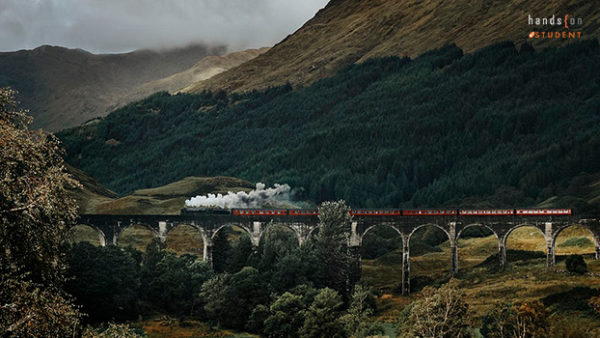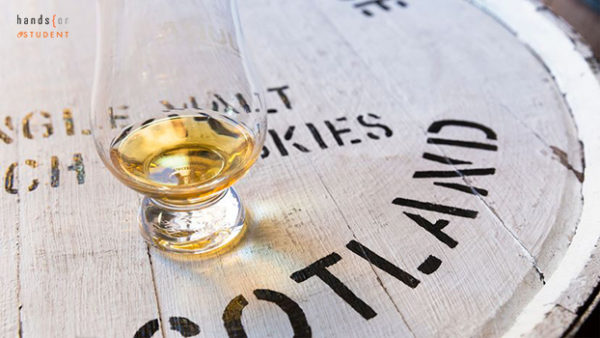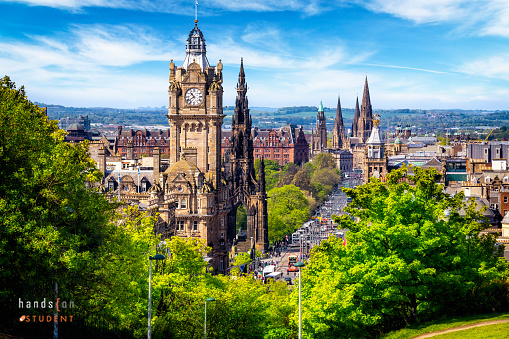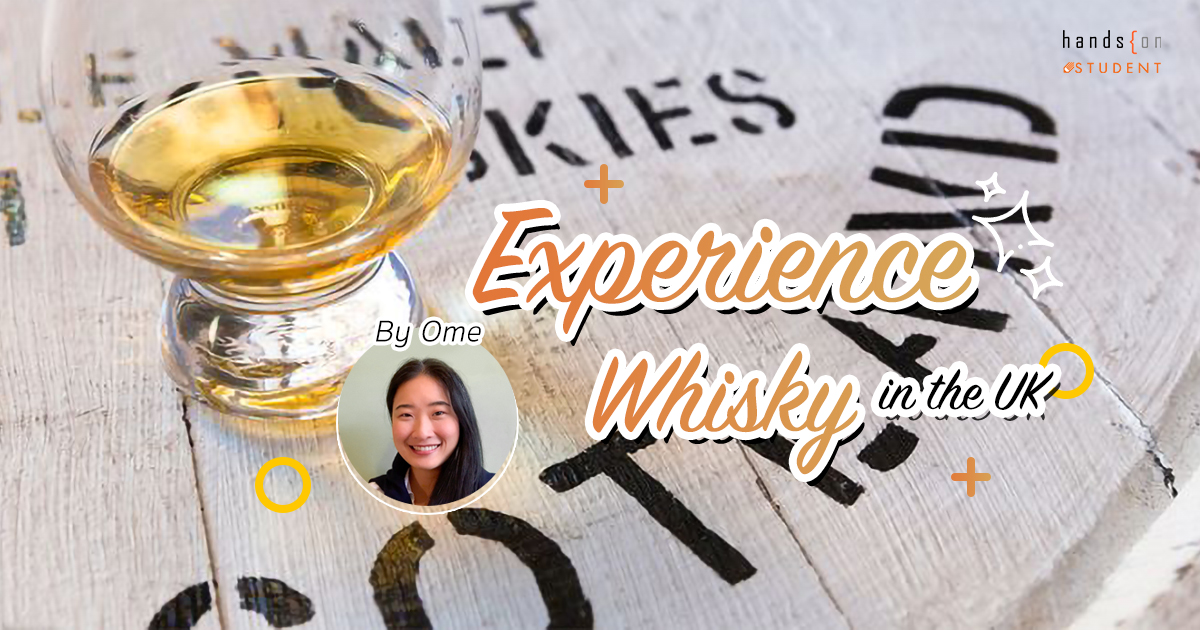‘Drink lots of Scottish single malt whisky for me’ said my manager and my senior colleague when I told them I’m going to Scotland for my master. I rarely drink beer or any alcohol, but single malt whisky seems to be a Scottish thing and a must thing to do when you live in Scotland. So, I added single malt whisky to my bucket list at the beginning of the academic year. Who would have known that this is the beginning of an eye-opening experience for me.

The experience
Before going to Scotland, I didn’t have a fond memory of the whisky. My tongue always got burnt. The heat rolled from my mouth to my stomach was not an experience I want to remember. The taste was bitter. I don’t understand why people would spend money on such an unpleasant drink.
BUT I’m in Scotland and people seem to love their whisky. So, I told myself I would give that brown burning bitter water a second chance. Maybe, it is me who don’t know how to appreciate it.

Luckily, a guy in the gang I made friends with during lockdown knows how to appreciate a glass of whisky. He picked up whisky glasses, a specific type of glass with a large curve at the bottom and narrow down toward the top of the glass. After tasting the whisky with your nose (ie smell it), one would take a small sip, roll it on the tongue for some time and slowly let it slip down the throat. After rolling the whisky down, the sensation could last for minutes!
Though all single malt whisky is made of the same ingredients and nothing else, surprisingly, throughout the months my friends and I tasted whisky together we noticed varieties of aromas from different bottles of whisky. In some, we got vanilla, popcorn, or even cornflake. In some, we got a strong petrichor – an earthy smell after the first rain.

I’m not good at using words to describe the sensational experience. My best attempt is that tasting whisky is like having a ride in an amusement park. Some started you off with a high bridge, dropped you down and ended with a splash of water. Some were smooth and sweet like you are riding a carousel, but some gave a quick turn, then a sudden drop. No matter how descriptive I were, you wouldn’t understand these experiences by listening to other people stories. You wouldn’t understand it until you took the ride yourself.
Each of us would get a different aroma and taste. We as a human usually link each sensation with memories. A whisky reminded my friend of a campfire he went to last year where he had the same whisky. He didn’t even remember that he had a glass of whisky that night. But his brain remembered the aroma and brought him back to the place. As each of us holds different sets of experiences, the subtle aroma of whisky reminds us of different things. Once my friend mentioned a particular sensation, I will start to notice it too. Tasting a glass of whisky with a group of friends widen my perspective on the whisky. For me, this is the best part of the whisky experience.

Tip: if the whisky is too spicy/bitter, take a sip of whisky after a sip of dark beer or a bite of sweet desserts like a brownie or sticky toffee pudding. Pana cotta is an ok combination… but this is the best picture of whisky and dessert I have ;P
‘The’ whisky
Each whisky has a unique and complex aroma. If you like the glass of whisky you are holding, no one can promise you can have it again.
In process of making a glass of whisky, various factors contribute to the differences in the aroma. Some factors are within the control of the distillery. According to the tour guide at Kilkerran distillery, the distillery boiler’s tube that seven-degree tilt steeper than the other makes the whisky sweeter than their other whisky. Some whisky experts would say the location where the distillery is located affect the aroma of the whisky. Whisky from Campbeltown, a small Scottish town in the west, usually has a hint of salty, vanilla and toffee. Some experts believe the salty wind is brewed into the whisky in the barrel.
‘Some differences cannot be explained’ tour guides at two distilleries admitted. With decades of experiments, they cannot explain why whisky in each barrel in the same batch produces a different level of alcohol, thus, different in level of spiciness and intensity. They ended up calling it ‘angel’s share’ as if the angel took an unknown portion of alcohol in each barrel, resulting in a different flavour in the same batch.
Though the distillery has tried their best to maintain the standard, they cannot guarantee anything. The 5-year maturation whisky that was produced 10 years ago possibly do not have the taste the same as the one produced today, according to a tour guide at Springbank distillery.
Besides those differences from production, a group of people, so-called ‘the independent bottler’ would mix various bottles of whisky, stamp a new brand on it, and resell the mixed bottle. What people like about this type of whisky is that it has an even more complex taste node and aroma. For some people, it becomes their favourite whisky of all time and would trade anything to have those whiskys again. The bad news is that these independent bottlers usually love to try a new recipe and change their production line from time to time. Once the production line is stopped, you won’t be able to find that specific whisky again.
This explains why some of the whisky is so expensive (besides the fact that some of them are in the fanciest bottle). Because for some people, it is a privilege to get a hold, to have a glimpse of the experience… for one more time.
The memory
Whisky brings back memories through the aroma while creating new memories at the same time.

When I decided to do a master in June 2020, I know the student experience was going to be different with COVID-19. Uncertainty was the only certainty at that point. I know I would have lessor chances networking as a master student should have had. But I believe, the quantity is not the same as quality. And meeting good quality of people who you were able to make a good connection sometimes happens by chance.
Lockdown means fewer activities from school and less travelling to other cities. But tasting whisky from the five regions in Scotland in a kitchen in student accommodation, I got to know and experience each of the five regions. The aroma brings back memories. We talked about it. The storyteller got to relive the experience while inviting the listener to peek into it. Companions and new memories – these are all I need for a trip.
‘Whisky is for sharing’ said the 35-year-old pub owner who hold and tasted a great amount of portion of exclusive Scottish whisky. No matter how expensive and exclusive a bottle of whisky is, the only thing that matter is the people you are sharing with. You are turning the brown burning bitter (sometimes sweet and smooth) water into a memory that will be with you forever.
So yes! I’m glad I gave whisky another chance. And yes! I’m glad I am a part of class 2021 even though we had to go through restrictions and program adjustments. If not, I wouldn’t have ‘the’ whisky memories and experiences.

The experience bought to you by ‘Jupiter’s blood group’
(why this name? That’s another story for another day)
If you want to have your first sip of whisky…
- Make sure you have a meal beforehand. Whisky has 40-92% alcohol by volume (ABV), meaning you will get drunk fast!
- If you are in Edinburgh, I recommend The Ensign Ewart. They offer sets of whisky for beginners to try different whisky with cheese or chocolate. Or ask the staff for a recommendation.
- My favourite are Sprinkbank 10 or 15 years, not too spicy with sweet aroma; Lagavulin 16, well balanced taste with a hint of wooden aroma; Ancnoc, rounded salty and sweet at the end (recommended for beginners); Ardbeg, known as the peatiest and smokiest whisky.










